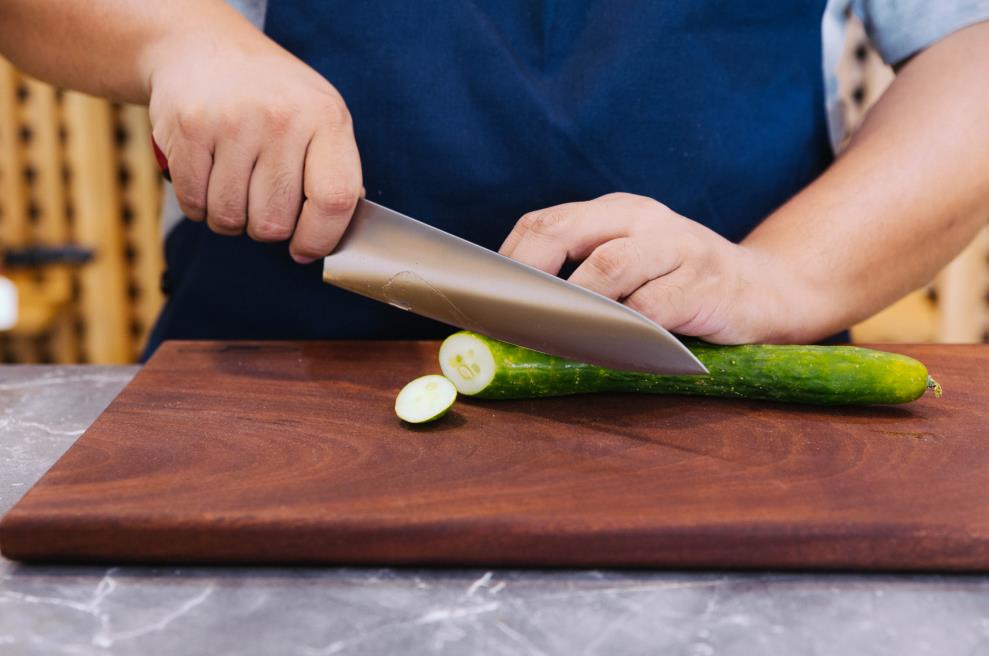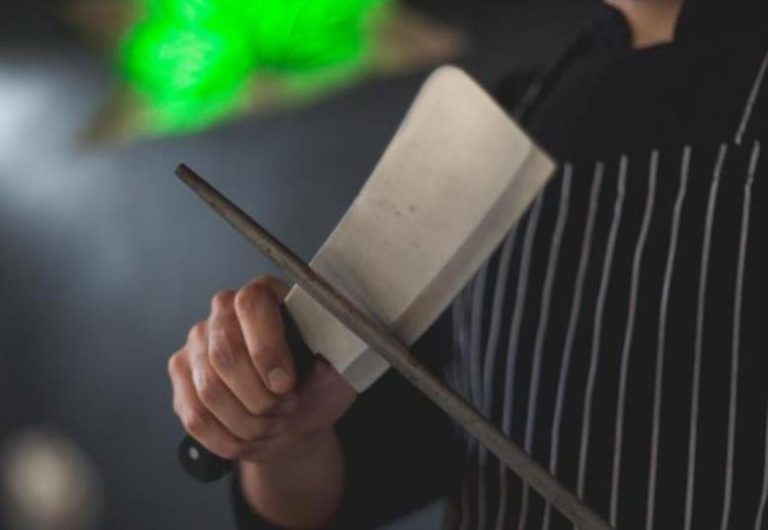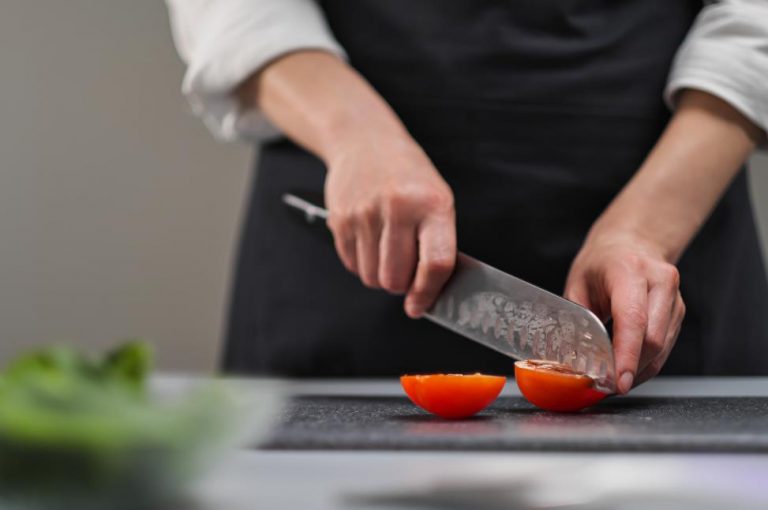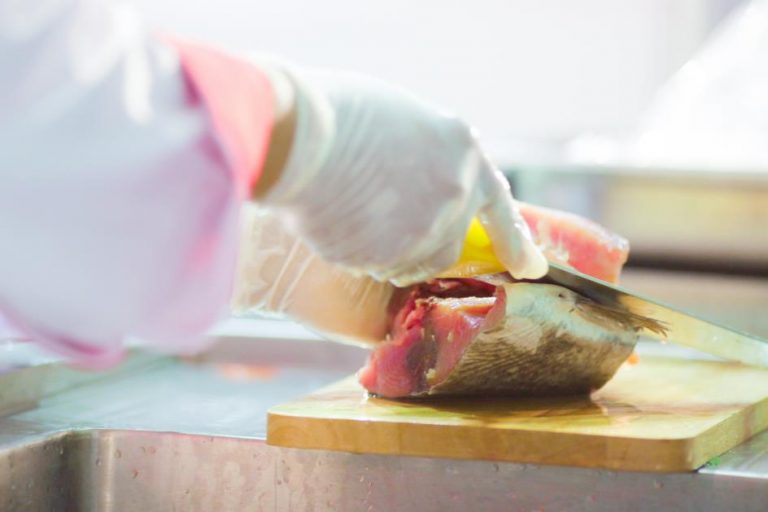With more than 200 types of Japanese knives to choose from, adding a new one to your store can leave you pondering for a little longer than you’d like.
There are many great choices, with some of the most popular being the well-known Santoku and Gyuto blades. Yet, there’s a traditional Japanese knife that does a fantastic job at marrying the quality and sophistication of the Japanese blades with Western versatility and comfort.
The Bunka knife is a general-purpose tool that does exactly that, all the while appealing to many different customers. Recent years have seen this knife design slip between the cracks, so this might be just the perfect moment to reintroduce this blade to a larger customer base. It will probably do the selling for itself.
What is a Bunka knife?
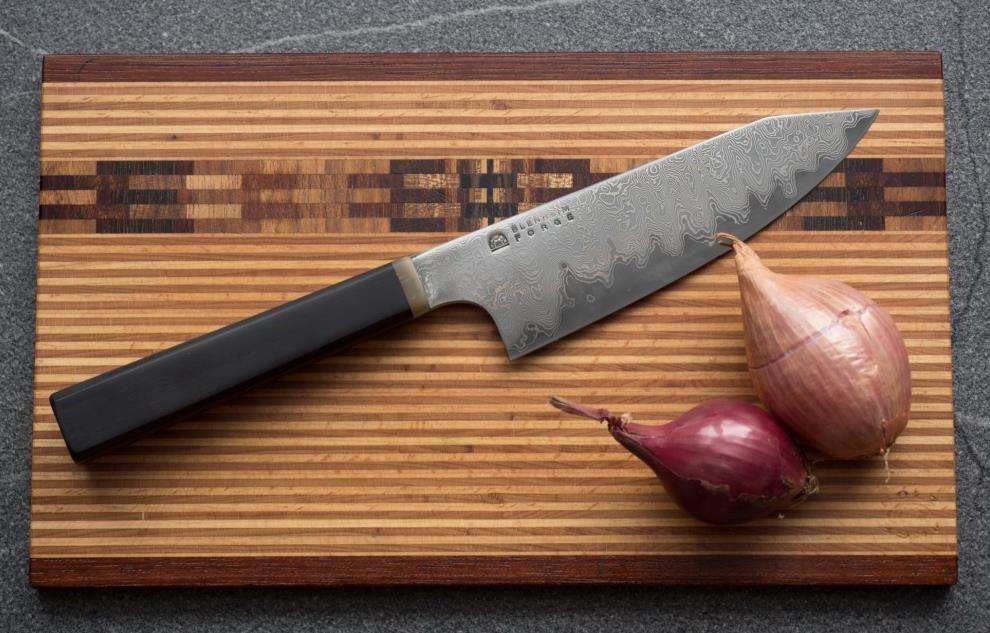
The kanji that make up “Bunka” literally translate to “culture.”
The meaning of this knife’s name is up for interpretation. The Bunka knife is one of the earliest Japanese all-purpose knives, introduced in the late 1860s, during the Meiji era. As the Edo rulers imposed food purity laws on Japan, many different types of blades emerged.
The Bunka, in particular, was initially designed to suit new preparation techniques which came with opening borders to the West.
Hence, the “culture” element. Due to its versatility, the Bunka knife made it easy for Japanese cooks to prepare ethnic cuisine while also allowing them to experiment with new, Western-style dishes.
Buy Wholesale Knives and Start Scaling up with Us Today
Contact us and connect with a sales rep to get a free quote.
Bunka knife uses
A truly effective multi-purpose, the Bunka knife lends itself very well to cutting, chopping, and dicing fruit and vegetables, as well as nuts or herbs. Many users find the nimble point useful when getting under the fat and sinew of meats. Moreover, the clip also allows for expert preparation of fish and other sea foods.
Their fairly flat profiles makes them great for push cutting and chopping, while the sharp point increases precision and makes it very easy to pierce through different types of foods.
Bunka knife design
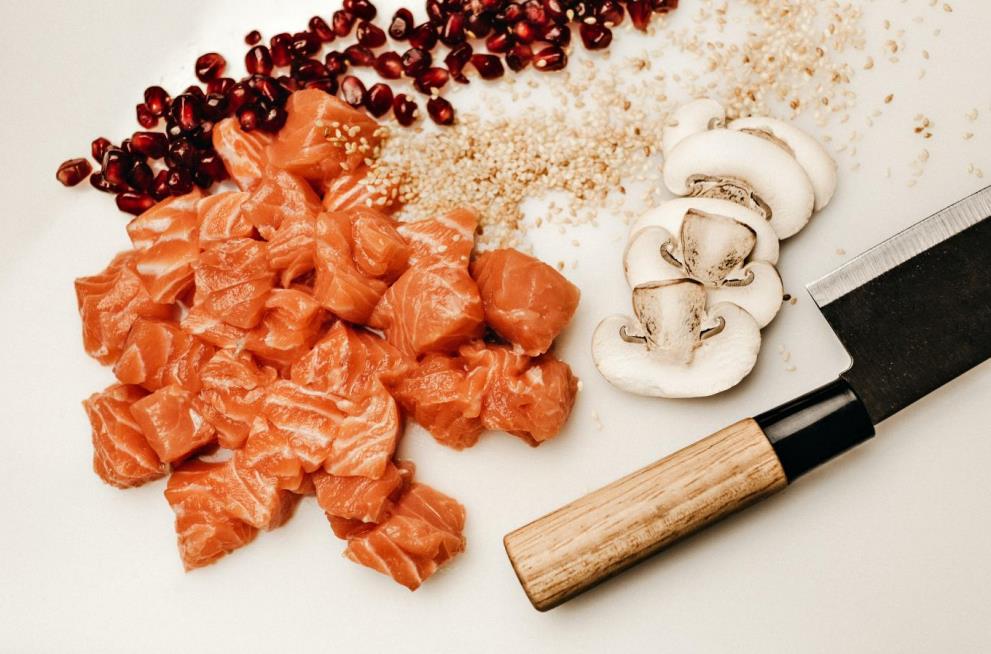
The design is one of the aspects where this knife shines. At a close look, there are minor differences between a Bunka knife and the ever-popular Santoku.
One of the biggest differences buyers make is related to its aspect. The Bunka blade is wider than most other Japanese all-rounders, although they have a more compact length.
Thus, they are smaller and lighter, making them very easy to use for long periods. Their small size and overall weight make them the preferred choice for female home cooks or professional chefs since they reduce fatigue.
Although traditionally smaller, these blades are commercialized in an extensive range of lengths, starting from about 120mm and going up to 240mm. The most popular choices, however, stand between 165mm and 180mm.
The beautiful Bunka blade
Design-wise, the Bunka blade is a hybrid between a Nakiri (vegetable knife) and a Gyuto (Japanese chef’s knife). It features a long, straight edge, slightly sloped towards the tip.
The tall heel ends in a reverse-tanto or clip point, lending this knife the beautiful look of a traditional Japanese sword.
Japanese knives can be single-beveled or double-beveled, which refers to them being sharpened on only one side or equally on both sides.
In general, the traditional Japanese blades are single-bevel, with more modern types having a double-bevel which suits Western users better.
In this regard, the Bunka blade can be considered a modern type since it typically features a double-beveled edge.
Moreover, an important distinction between these knives lies in their handle type. Traditionally, they are made with “Wa” handles.
These can be created out of various types of wood with different collars, but they tend to have a lighter overall feel and greater blade forward balance.
With this handle, the knives tend to have a tang that is around ¾ of the blade, which is glued in place. This design works best for cooks who employ traditional Japanese cutting techniques, as it makes it exceptionally easy to pinch-hold the knife while cutting.
Yet, since these knives were made to suit a wide range of cutting techniques, you’ll often see them made with Western-style handles, making them more comfortable and accessible to a more extensive customer base.
Bunka knife materials
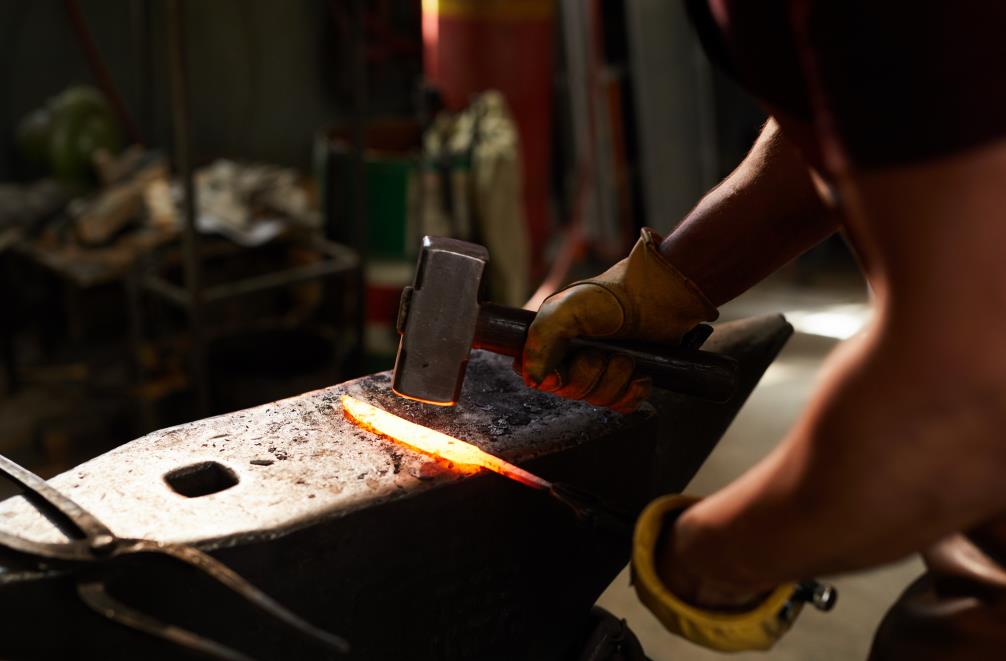
As always, the type of steel used and the manufacturing technique speak volumes about this knife’s edge retention and overall resistance to corrosion or rust.
Not to mention, the materials will be a major factor in determining its price, as well.
A carbon steel Bunka is easy to sharpen and tends to remain sharp for longer periods. Hence, it is a trendy choice among many home cooks. One of the downsides of this material is that it makes the knife more susceptible to rust and corrosion.
With prolonged use, a carbon steel Bunka will usually develop a patina. Depending on your customer base, this can be both an advantage and a disadvantage.
Many chefs love the patina’s look and even make strides to use the blade in specific ways or on certain foods to influence the look of said patina.
Home cooks might not appreciate this, and many pros dislike the final look of such a blade.
Some of the most popular high-carbon steels used for Bunka knives are the White and Blue Steel, VG 10, and AUS 8.
You will also find Bunka partially made out of stainless steel. Although this material has some distinct advantages, such as its excellent resistance to corrosion and chipping, it’s rarely used for the entire blade.
Most Japanese blades tend to employ this material for the tang and cladding only, as it has poorer edge retention and makes it harder for users to sharpen their knives.
Buy Wholesale Knives and Start Scaling up with Us Today
Contact us and connect with a sales rep to get a free quote.
Bunka knife variations
One of the most popular variations of this knife is the Ko-Bunka knife. Sharing most of the same characteristics, this variation is a lot shorter than the typical Bunka.
They are generally made 130mm long, and they are also called tall Bunka knives. They made great additions to small kitchens, as they can be used for most of the same purposes as a traditional Bunka.
A Ko-Bunka can be regarded as a mini-Santoku blade, although they are generally more sought-after for their edgier design and better blade balance.
Bunka vs. other Japanese all-purpose knives
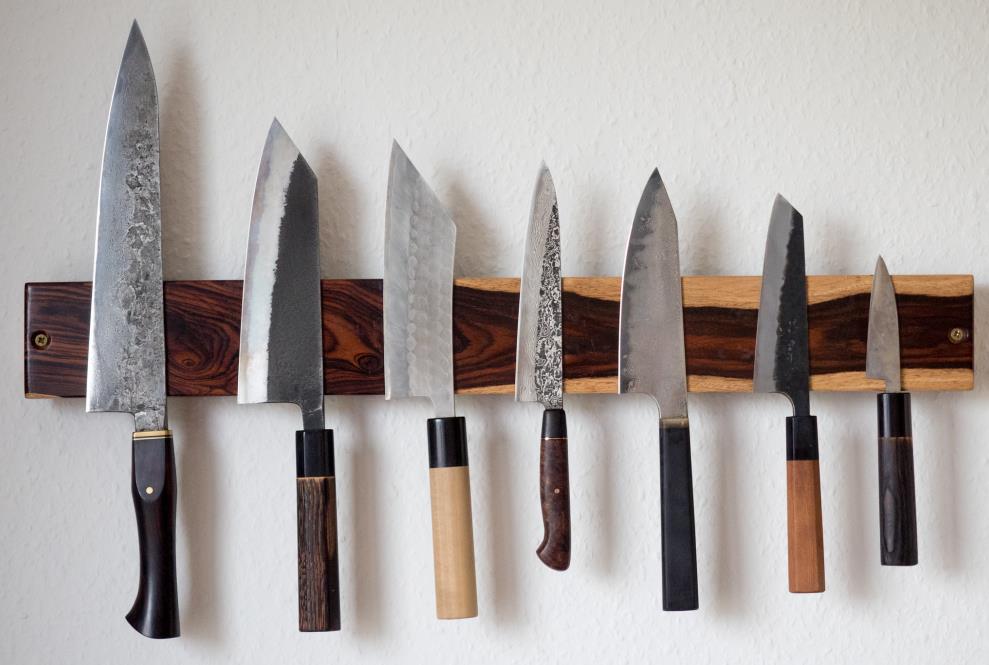
| Differences | Bunka | Santoku | Gyuto | Kiritsuke |
| Name meaning | Culture | Three uses | Beef Sword | to slit open |
| Blade design | Rectangular; flat profile; reverse tanto point | Rectangular; slightly curved profile; Kamagata tip (sickle-shaped) | elongated; flat profile sloping towards the point; low, pointed tip | long, rectangular; completely flat profile; reverse tanto point |
| Typical size | 165-180mm | 125-200 mm | 180-300 mm | 240-330 mm |
| Uses | all-purpose | all-purpose | all-purpose | all-purpose, mainly used by executive chefs |
| Suitable for | most home cooks, particularly female cooks | small spaces, beginner cooks | most households and professional environments | executive chefs, enthusiasts of Japanese cuisine |
Should you sell Bunka knives in your store?
Bunka knives are easy to come by in many knife stores, covering a large array of designs, materials, and sizes. The popularity of the blade can be easily grasped when looking at how many of the variants are consistently sold out.
Custom blades with unique handle designs can sell for up to $500, and blades with intricate Damascus patterns are especially popular with customers.
Many stores upsell different handles, sheats, and other accessories with their knives, offering a complete high-end experience to customers looking to splurge on a quality tool.
There are also budget options out there, with some stores sacrificing the final look of the blade in order to offer quality materials for under $100.
With both options, the reviews are overwhelmingly positive, leaning into the versatility of the blade, as well as the envious looks they get from visitors.
Who will typically buy Bunka knives?

Bunka knives used to be just as popular as Santoku knives are now but have become less so in recent years. With plenty of TV chefs promoting the Santoku blade, it has become somewhat of a cultural staple in many kitchens.
Yet, Bunka knives preserve their many advantages, even if they don’t differ from Santokus too much.
The design of the blade allows the same effective use one would get out of a Santoku, with the added benefit of the reverse tanto point.
This is not only a stylistic choice, but it does give the knife a certain appeal that’s hard to find with other blades. The sharp point offers a better blade balance and makes itself extremely useful for piercing and precision cutting.
For this reason, many people prefer the Bunka over the Santoku, especially if they are typically preparing a lot of fish products.
Buy Wholesale Knives and Start Scaling up with Us Today
Contact us and connect with a sales rep to get a free quote.
The flatter profile of the Bunka makes it a bit harder to use for rock-chopping, but it excels in virtually all other cutting techniques.
If you’re already marketing a number of Santoku blades with success, a Bunka blade might be an excellent addition to your store.
Even if you’re only beginning to add Japanese knives to your store, this knife can be an excellent first choice. Its versatility can find it a place in any kitchen, so finding customers for this blade shouldn’t take too much effort.
Moreover, the Bunka knife comes in both traditional and modern, Western-style variants, appealing to a very large customer pool.
Many knife retailers testify to its popularity, with some saying that the Bunka remains their best-selling blade to date, despite the soaring popularity of the Santoku.
In terms of reviews, it receives consistently positive feedback from both professional chefs and home cooks, so it’s safe to say that you can’t really go wrong with this flexible tool.
Lastly, it’s important to remember that many shoppers are attracted to the unique design of the Bunka blade. It makes for excellent gifts, and it’s more likely to be bought on impulse than most other blades.
Wrap up
Recent years helped bring Santoku and Gyuto blades to the top of the list regarding an easy choice for a Japanese knife. It’s no surprise that you don’t hear the name of the Bunka knife thrown around as often, as it doesn’t feature significant differences from those top choices.
Yet, under the shallow buzz of Internet recommendations, Bunka blades continue to sell exceptionally well and find their places in many kitchens around the globe.
While the name doesn’t necessarily speak for itself, marketing these blades with professional-looking photos will almost always result in significant profit margins.
Since this knife performs similarly to the most popular choices of Japanese knives and even better in some conditions, it’s up for its design to influence the most purchases.
And the Bunka blade has no issues doing that, considering that it’s the best blend between the sophisticated Japanese look and the comfortable and versatile use that Western customers are looking for.
If you’re ready to take the plunge and add this knife to your collection, you’ll be happy to know that LeeKnives can take care of the entire dropshipping process for you. Bunka knives can make their debut in your store faster than you’d think, so let’s have a short chat about it.
